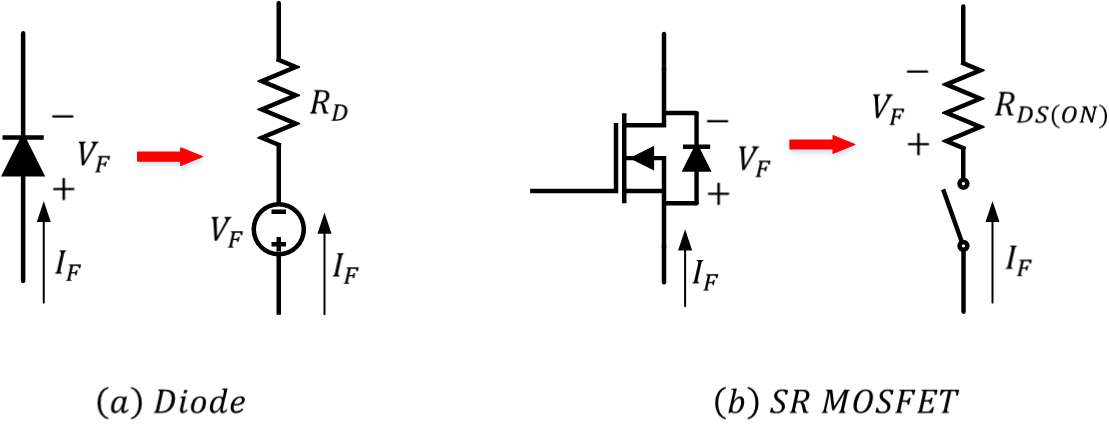SLUAAH1 December 2021 UCC24624
1.2.1 Diode Rectification and Synchronous Rectification
SR is widely used in LLC resonant converter to improve power supply efficiency to meet stringent energy-saving standards. If a MOSFET is turned on and off in synchronization with the diode rectifier, it can be used to replace the diode. Instead of a fixed voltage drop, when the MOSFET conducts, its voltage drop is proportional to its on-state resistance (RDS(ON)) and the instantaneous current (IF). When the resistance is low enough, the MOSFET can achieve much lower conduction loss and less heat is generated.
Figure 1-1 shows the equivalent circuits for diode and SR MOSFET, respectively. Figure 1-1 (a) shows the linear approximation model of the diode conduction loss as a fixed voltage drop (VF) in series with a resistor (RD). As regards SR, if it is ideally controlled in synchronization with the current flowing, the SR MOSFET can be simplified as a resistor (RDS(ON)), as shown in Figure 1-1 (b).
 Figure 1-1 Equivalent Circuits for Diode and SR
MOSFET
Figure 1-1 Equivalent Circuits for Diode and SR
MOSFETAccording to equivalent circuits shown in Figure 1-1, forward voltage drop can be calculated with Equation 11 and Equation 2, respectively.
Additionally, SR MOSFETs offer extra advantages such as the ability to operate in parallel to prevent overheating in high-power applications. MOSFETs RDS(ON) have a positive temperature coefficient. When operating in parallel, resistance increases with the temperature rise, shifting power to the cooler device. By contrast, diode forward voltage drop has a negative temperature coefficient. Increasing temperature results in increased current flow in the hotter device, and increases the chance of overheating. It is worth noting that some of Silicon Carbide (SiC) diodes have a positive temperature coefficient, however, the price is still too high in the market and most of SiC diode vendors focus on high voltage rail (≥ 600 V) applications.